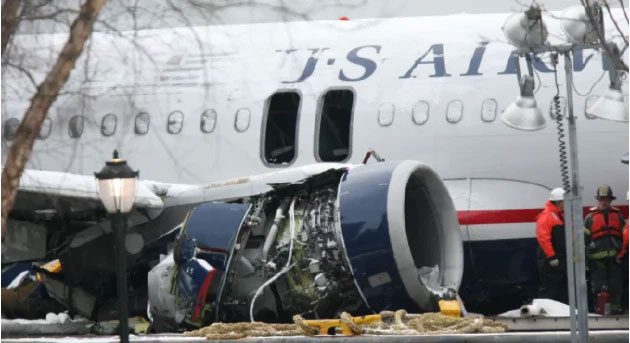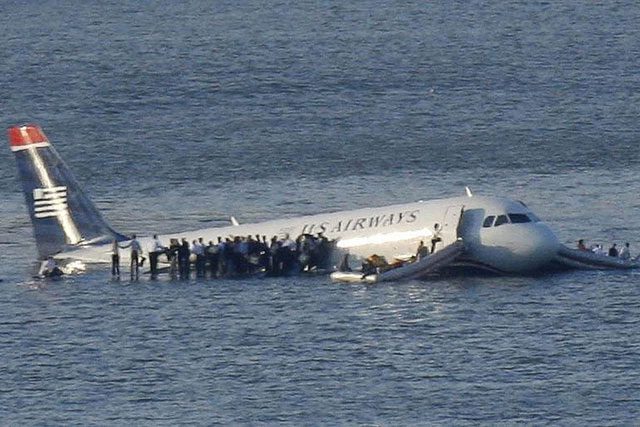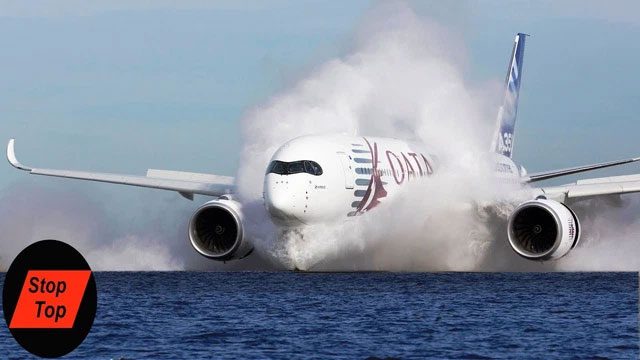What Happens When an Airplane Makes an Emergency Landing? At this point, the aircraft may tilt or descend abruptly, some passengers may smell smoke, and the captain announces via the broadcast system that the plane is making an emergency landing… In such cases, what is the likelihood of death for passengers and crew members?
What happens next? What options do pilots have, and what operational procedures must they follow during an emergency landing? What conditions prompt a pilot to declare an emergency landing? Jack Netskar, President and Captain of the International Pilot Association, states that there are many scenarios in which an aircraft may need to make an emergency landing.
He points out that these serious issues include: loss of control of the aircraft, fuel shortages, unsuccessful landings at the intended destination, technical malfunctions, or severe injuries to crew members… Although there is no strict definition for an emergency landing, they are categorized into three different types.

An emergency landing is when an aircraft is forced to land due to incidents related to aircraft operations or emergencies that require stopping as quickly as possible.
The first type is a forced landing – landing immediately at or outside the airport due to the inability to continue the flight, a typical example being an aircraft that must land due to engine failure;
The second type is precautionary landing, which is a planned landing. It may involve flying further in and out of the airport but should not be executed. Conditions for a precautionary landing include: bad weather, fuel loss, fuel shortage, hidden engine failure, involvement in terrorism, crime…;
The third type is the least common type of emergency landing. This is often referred to as “forced or precautionary landing on water”.

Compared to emergency landings on land, landing on water eliminates the risk of significant friction causing explosions of components. Conversely, the real danger lies in how to handle the situation after landing, as an aircraft on water will eventually sink.
One of the most famous examples of the third type of emergency landing is the forced landing on the Hudson River in New York, USA, in 2009. At that time, US Airways Flight 1549 struck a flock of geese and was forced to land on the surface of the Hudson River. Among the 155 passengers on board, 100 were injured, 5 critically, but no one died, largely thanks to the quick thinking of Captain Sully Sullenberger and the crew. This event was adapted into the film “Sully” in 2016, featuring the famous actor Tom Hanks as the captain.
According to the Aircraft Owners and Pilots Association (AOPA), the mortality rates for these three types of emergency landings vary significantly, approximately 10% and 20% respectively.
Netescal states that to prepare for and ultimately execute an emergency landing, pilots must undergo a series of steps, including: preparing the cabin for landing, requesting emergency services, reviewing all evacuation procedures, and formulating an action plan.
For example, pilots may choose to dump some fuel on board, thereby reducing the weight of the aircraft.
Related data indicates that an average Boeing 747 consumes about 4 liters of fuel per second and approximately 150,000 liters of fuel for a 10-hour flight. According to aviation expert Mark Goertzen, 150,000 liters of fuel weighs nearly 108,800 kg. When a heavy aircraft takes off, most of this weight has a high likelihood of not landing safely, so in emergency landing situations, pilots may sometimes need to jettison some fuel.
For example, one reason why American Airlines Flight 1549 was able to successfully float on the Hudson River was that the aircraft’s fuel tanks were not full, providing the plane with more buoyancy on the water.

In reality, emergency situations vary greatly, leading to many different methods of emergency landing. One of the most common cases is belly-landing, which occurs when the landing gear malfunctions. However, belly-landing causes the most damage to the aircraft, as this method makes the plane susceptible to rolling over and catching fire due to friction, leading to explosions upon landing.
Of course, the crew also plays a significant role in the emergency landing process. According to Airbus safety guidelines, the crew’s primary responsibility is to clearly communicate the situation to passengers and ultimately ensure everyone disembarks the aircraft safely, including: how the passenger aircraft lands, where and how they should disembark, how passengers and children should prepare, and what first aid items they should take with them.
In some cases, the crew may only deploy slides to ensure passengers do not return to the aircraft to retrieve their luggage and encounter danger. In one emergency landing incident in 2008, a passenger climbed back onto the emergency slide to retrieve some personal belongings, according to Airbus.
It is worth noting that the cost of emergency landings is very high. According to Emirates, the cost of “diverting a flight” ranges from $50,000 to over $600,000. The actual cost of an emergency landing depends on the underlying reason and the aircraft’s location. Various factors, such as landing and ground handling costs, air navigation fees, passenger rebooking costs, and crew and passenger care costs, also contribute to the total expense.




















































